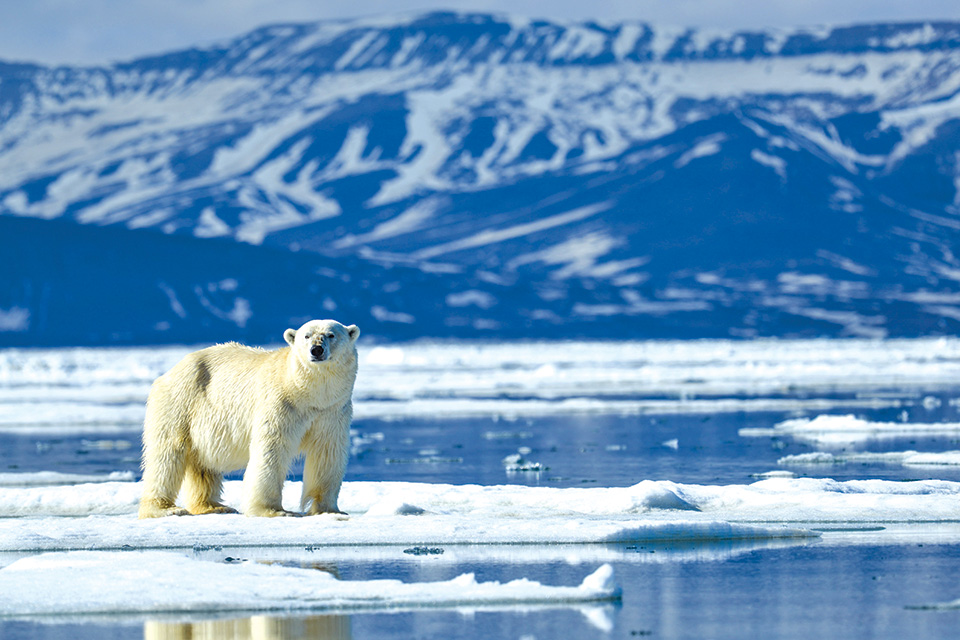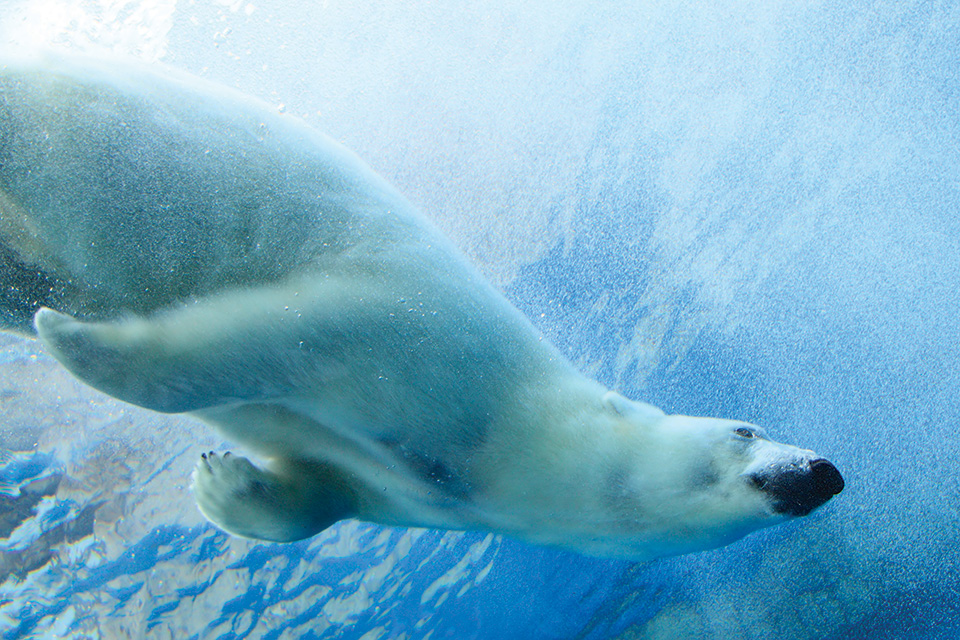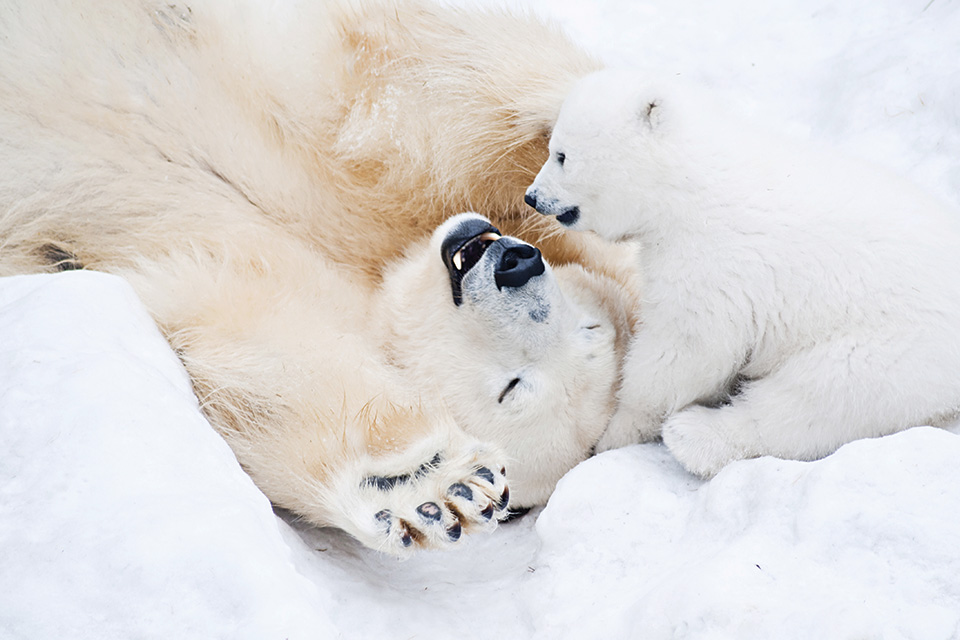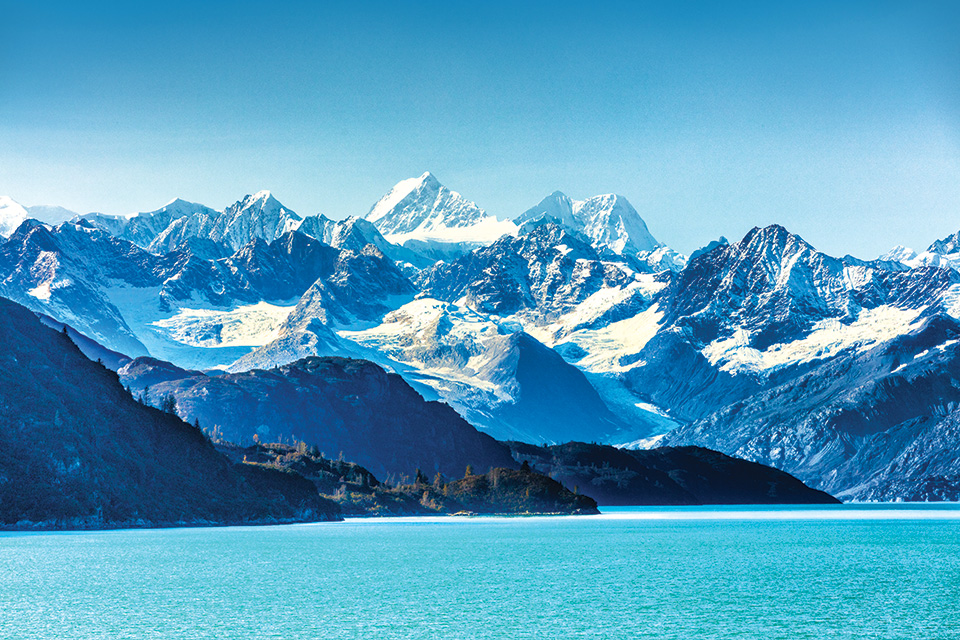
The polar bear is listed as a “vulnerable” endangered species. The most recent study (Hamilton & Derocher, 2018) estimates that there are currently about 23,000 polar bears in existence worldwide. But, without action on climate change, there could be dramatic declines in polar bear numbers. Polar bear numbers are projected to decline by 30% by 2050 to 16,100.
The polar bear is the largest bear in the world and the Arctic’s top predator. They are a powerful symbol of strength and endurance. This magnificent species spends much of its life in, around, or on the ocean, predominantly on the sea ice. Because of their dependence on the sea ice, polar bears are classified as marine mammals.
Polar bears rely heavily on sea ice for traveling, hunting, resting, mating and, in some areas, maternal dens. But because of ongoing and potential loss of their sea ice habitat resulting from climate change, polar bears were listed as a threatened species in the US under the Endangered Species Act in May 2008. As their sea ice habitat recedes earlier in the spring and forms later in the fall, polar bears are increasingly spending longer periods on land, where they are often attracted to areas where humans live.
Considered talented swimmers, polar bears can sustain a pace of six miles per hour by paddling with their front paws and holding their hind legs flat like a rudder. They have a thick layer of body fat and a water-repellent coat that insulates them from the cold air and water.
Polar bears spend over 50% of their time hunting for food. A polar bear might catch only one or two out of 10 seals it hunts, depending on the time of year and other variables. Their diet mainly consists of seals because they need large amounts of fat to survive. They have also been known to attack the walrus and beluga whale species. Polar bears are capable of fasting for up to several months during late summer and early fall when they cannot hunt for seals because of the lack of sea ice.
Due to their lack of human interaction, hungry polar bears are extremely unpredictable, fearless towards people, and are known to kill and sometimes eat humans. Polar bears are stealth hunters, and the victim is often unaware of the bear’s presence until the attack happens.
Being curious animals and scavengers, polar bears investigate and consume garbage where they come into contact with humans, including hazardous substances such as styrofoam, plastic, car batteries, and motor oil.


An adult male is referred to as a “boar” and weighs around 770–1,540 lbs. An adult female polar bear is referred to as a “sow” and is about half that size. Compared with its closest relative, the brown bear, the polar bear has a more elongated body build and a longer skull and nose. The legs are stocky and the ears and tail are small. However, the feet are very large to distribute their weight when walking on snow or thin ice. The polar bear has an extremely well-developed sense of smell, being able to detect seals one mile away and buried under three feet of snow. Its hearing is similar to that of a human, and its vision is also good at long distances. Adult polar bears live solitary lives but they have been seen playing together.
Mating takes place on the sea ice in April and May when polar bears congregate in the best seal hunting areas. Partners stay together and mate repeatedly for an entire week. Each pregnant female digs a maternity den consisting of a narrow entrance tunnel. The polar bears that do not den on land make their dens on the sea ice. The female will enter a dormant state similar to hibernation. Sometime between November and February, cubs are born blind, covered with a light down fur, and weighing two pounds. Cubs are weaned at two and a half years of age, when the mother chases them away or abandons them.
Polar bears rarely live beyond 25 years. The causes of death in wild adult polar bears are poorly understood, as carcasses are rarely found. In the wild, old polar bears eventually become too weak to catch food, and gradually starve to death. Polar bears injured in fights or accidents may either die from their injuries or become unable to hunt effectively, leading to starvation.
The polar bear is found in the Arctic Circle and adjacent land masses as far south as Newfoundland. The range includes the territory of five nations: Denmark (Greenland), Norway (Svalbard), Russia, the United States (Alaska), and Canada. These five nations are the signatories of the International Agreement on the Conservation of Polar Bears, which mandates cooperation on research and conservation efforts throughout the polar bear’s range.

